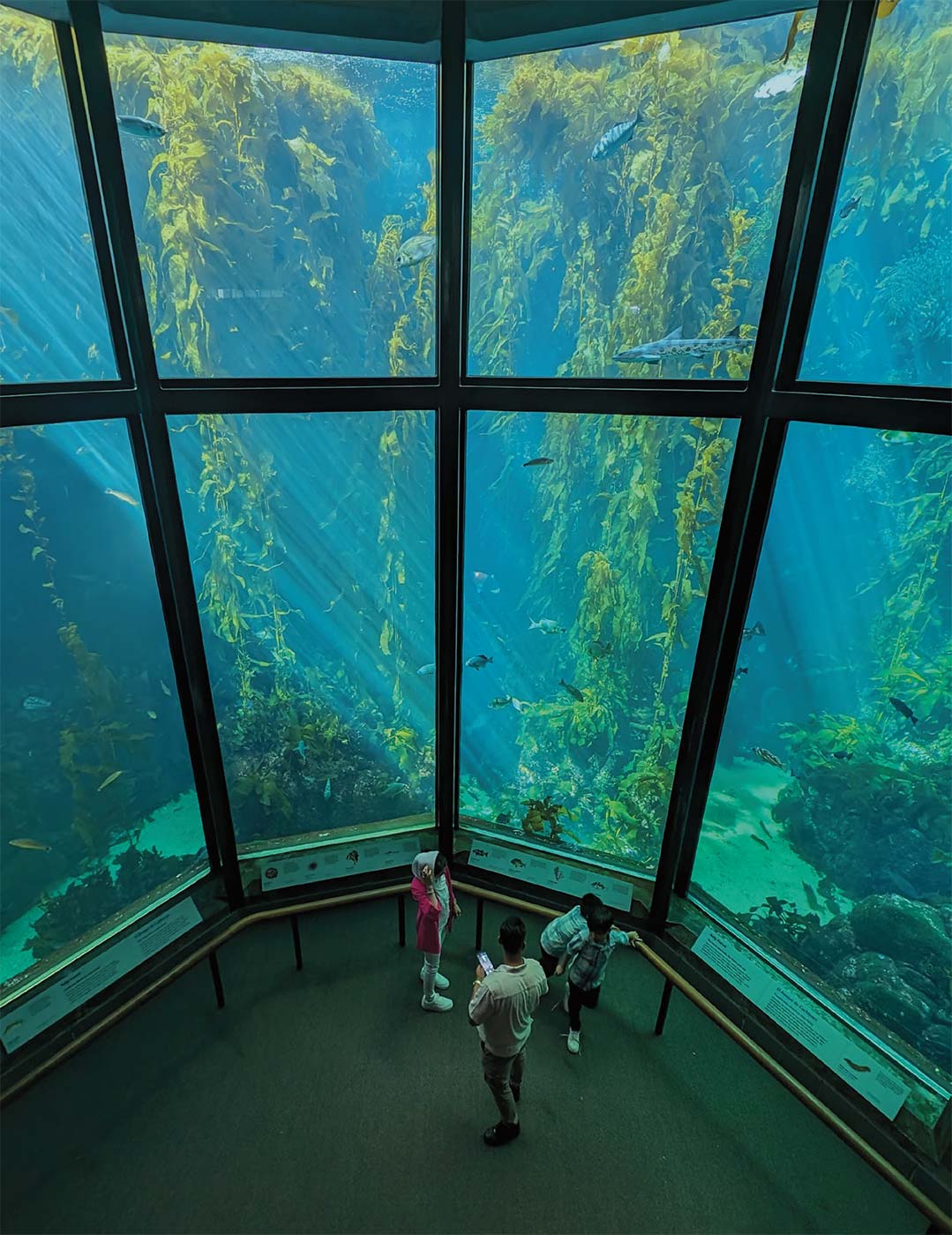
PHOTOGRAPHY BY MARK C. ANDERSON
It started with petty theft.
Mild-mannered Monterey Bay Aquarium visitors dining in the café increasingly started slipping tent-shaped seafood guides from atop their tables into their pocket or purse.
That was spring 1997, long enough ago that Princess Di was still alive, “sustainability” was an obscure economic term and, as far as the theft is concerned, statutes of limitations have kicked in.
The stolen guides were provided in concert with a special temporary exhibit at Monterey Bay Aquarium called Fishing for Solutions: What’s the Catch, which profiled the havoc created by irresponsible fishing, from iffy fish farms destroying mangrove habitat to 30 million tons of bycatch thrown away annually.
The closing mural mapped declining fisheries worldwide, unleashing a fire burst of red icons across the planet’s oceans.
The tabletop guides complemented the installation with ways eaters could help. The ensuing theft triggered a transformation.
“We realized, ‘We’re on to something here,’” Erin Hudson says. “‘This is something our guests want to know about.’”
The outcome was the Seafood Watch program Hudson now directs, which made its first big splash with pocket-sized consumer guides evaluating environmental impacts on various fish species, sorted into red (avoid), yellow (good alternative) and green (best choice) categories.
“Ask, ‘Do you sell sustainable seafood?’” the guide’s March-August 2024 edition reads. “Let businesses know it’s important to you.”
Longtime Seafood Watch manager Sheila Bowman, who’s now a consultant, had a front-row view as MBA networked with 200-plus other aquariums, zoos and conservation groups to distribute guides.
“It incentivized restaurateurs and chefs to know where their fish was coming from,” she says. “Questions about where your seafood comes from and how it was produced moves the supply chain to provide answers. The only way that happens is if it’s valuable to the consumer.”
As Seafood Watch celebrates a quarter century this year, the cards remain the program’s most identifiable symbol, with more than 65 million circulated to date.
But they’re also just the tip of the dorsal fin. There’s a lot going on below the surface.
The width and breadth of that work demanded that, in order to effect global change, Seafood Watch had to change itself.
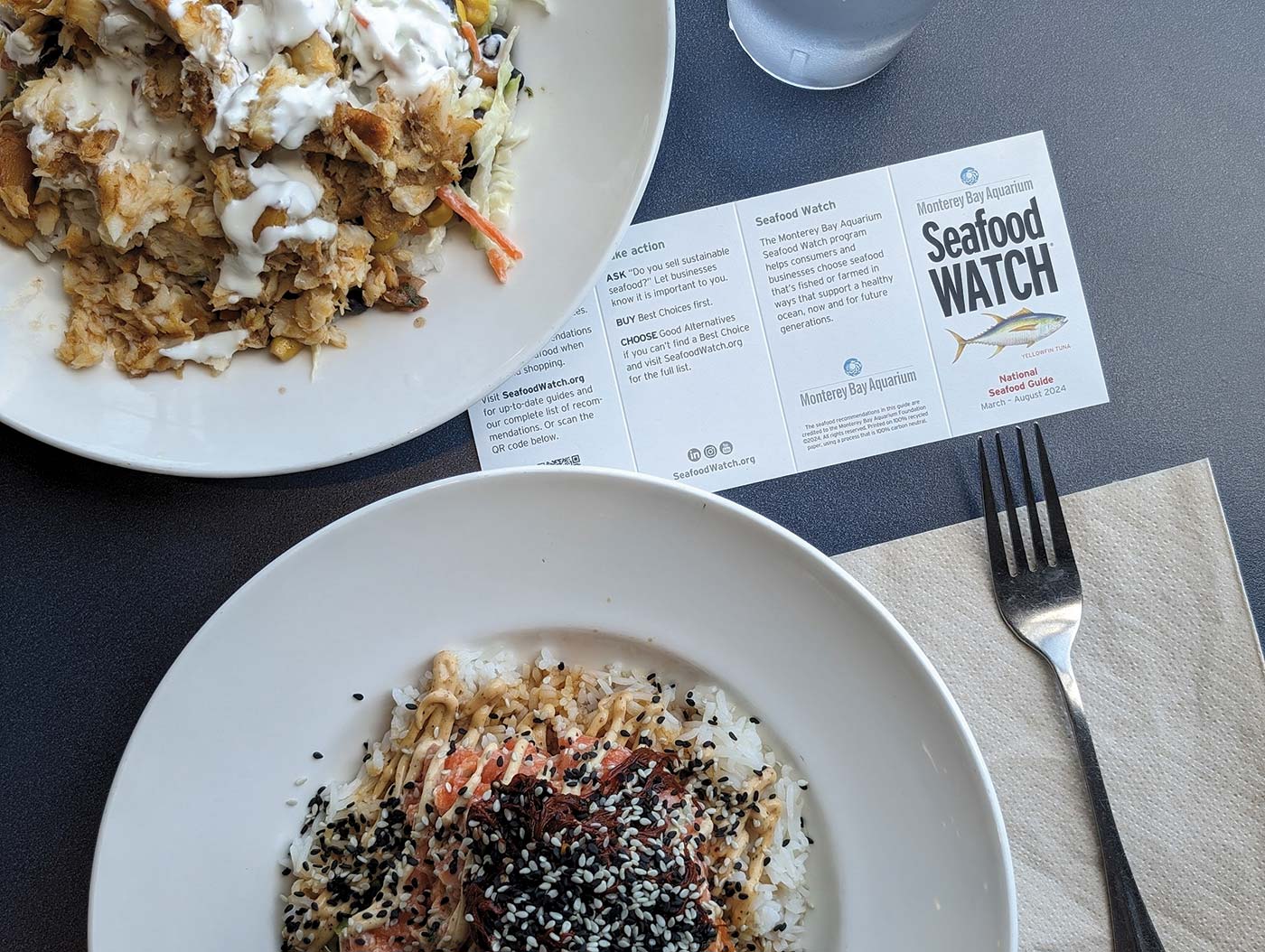
FIRST WAVE
When it came to ocean-friendly habits, restaurateurs Ted and Cindy Walter had their heart in the right place. The science, not so much.
The Walters’ Passionfish seafood restaurant debuted in Pacific Grove around the same time as the Fishing for Solutions exhibit did, with a clear vision of working with sustainable catch.
The heart they inherited from Cindy’s dad, a pole fisherman embittered by destructive trawlers, and her Indigenous mom, who taught her to think in generations.
As Cindy is fond of saying, “Once you destroy a species, it’s gone.”
Their science wasn’t as hard wired. Fortunately world-class marine scientists from nearby Hopkins Marine Station were early patrons, and they’d comment or leave notes flagging problematic fish on the menu— challenging Cindy to show how she knew the “New Zealand blue-nosed seabass” was legit—and field her follow-up calls.
When diners started arriving with Seafood Watch cards, the Walters were torn: Yay, consumers are asking questions. Nay, many fish they’re requesting aren’t easy to source.
“As easy as finding purple squirrel,” Cindy says. “At the time, Seafood Watch didn’t totally understand how the business worked.”
She took then-Seafood Watch director, now-global ocean conservation senior vice president Jennifer Dianto Kemmerly to a vendor meeting. Walter remembers one producing a seafood invoice scribbled simply, “FOOD PRODUCT,” and Kemmerly asking, “How do you know what kind of fish it is?”
The supplier’s reply: “You look at the fish and try to identify it.” Kemmerly was shocked at the void of information, which led to a programmatic leap.
“They realized if sustainability was going to make a difference, they needed to figure out a way to support restaurants and retailers,” says Walter, who credits Aquarium advocacy with helping inspire the USDA to implement country of origin labeling for seafood.
Seafood Watch team members started meeting with chefs, and a restaurant program took shape, providing helpful questions to ask suppliers; meanwhile, its sustainability guide for businesses remains easily accessed online today.
“Restaurants have to slug it out with their suppliers and find one that’s willing to provide information about the seafood they’re buying,” Bowman says. “In some cases it was worked out and the information flowed. In others, it took a lot more time.”
Then staffers started seeking bigger fishmongers. Seattle- area organic grocer PCC Community Markets and the Aquarium’s then-food service provider Bon Appetit agreed to use only best choices and good alternatives at all their locations nationwide. Today that roster claims heavyweights like Whole Foods, The Cheesecake Factory and Mars Petcare.
“The power of those partners to help drive change through market pressure is immense,” says Seafood Watch outreach manager Corbett Nash. “Those are large organizations with a big footprint, who talk to a lot of people, not just buyers, but wholesalers and producers.”
Partners like New Leaf Community Markets favor Seafood Watch’s recommendations over other guides (see sidebar, p. 52) at least in part because of “extensive research and rigorous assessment,” according to New Leaf brand manager Lindsay Gizdich.
“Our customers can take comfort that they are making a good choice when shopping our seafood counter,” she says.
The restaurant program morphed into a culinary Blue Ribbon Task Force, just around the time the U.S. was hitting peak celebrity chef. Alton Brown, Thomas Keller, Suzanne Goin and Rick Bayless not only broadcast the ethics of savvy sourcing with Seafood Watch cards in their venues and coordinated messages on social media, they also dished it for hundreds of attendees at the annual Cooking for Solutions gala.
Paired with a Monterey Bay Area chef also committed to SW guidelines, those chefs anchored what for 13 years was the best food event in an area swimming with them, while framing the big picture. Ahead of the 2009 CFS when Keller was named Conservation Leadership Chef of the Year, I asked him what happens when we’re not careful about the way we steward good sources.
“We’re not going to have anything left,” he said.
Today the task force continues to meet to advance the cause and its chef ambassadors appear on YouTube with commentary on top-shelf environmental priorities and seafood prep.
“We’d like to see sustainability to be the normal,” says repeat James Beard Award semifinalist Steve Phelps, as he introduces a thinly sliced scallop crudo dish with aji amarillo and watermelon radish. “Should sustainability still be the word or should it be responsibility?”
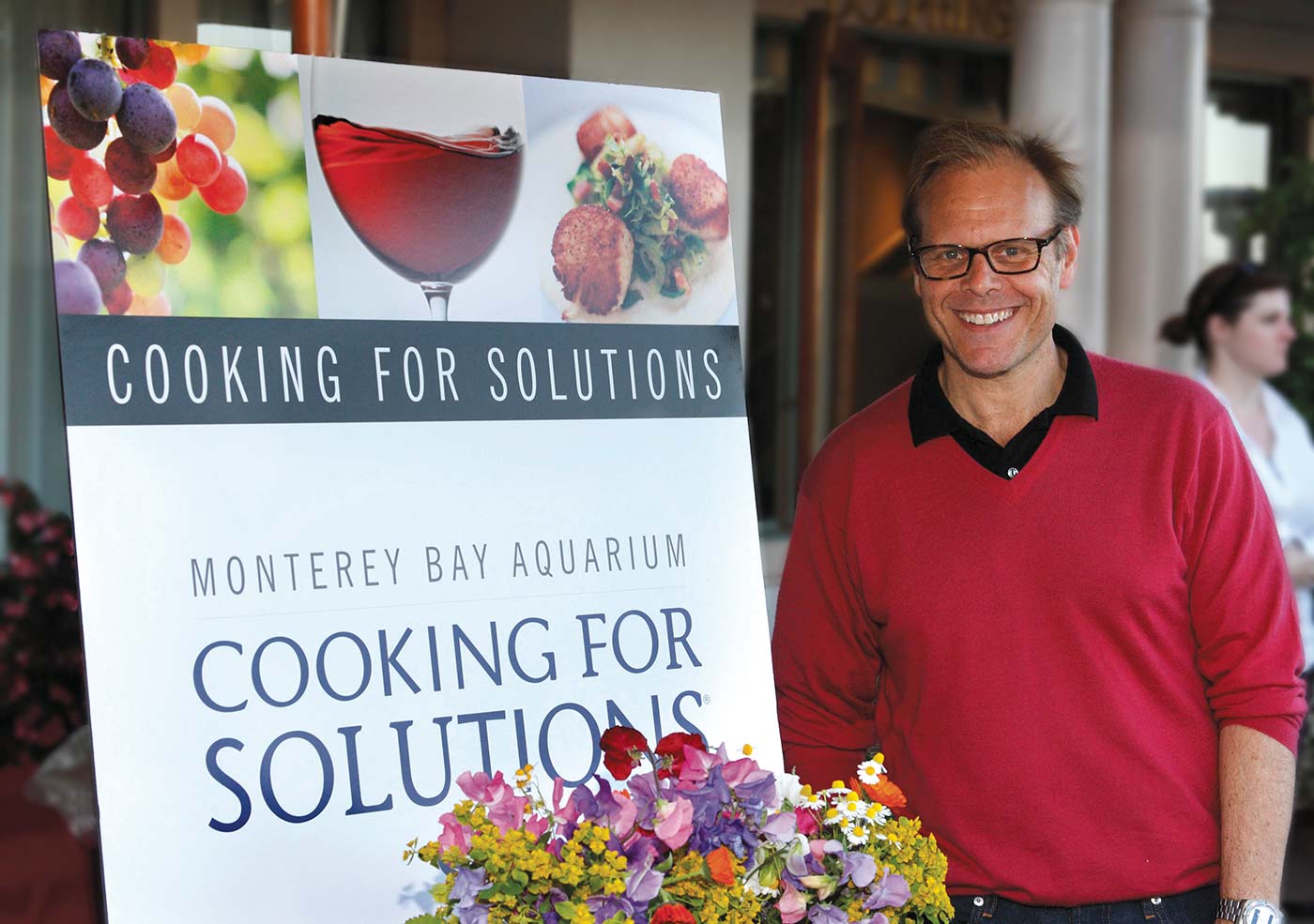
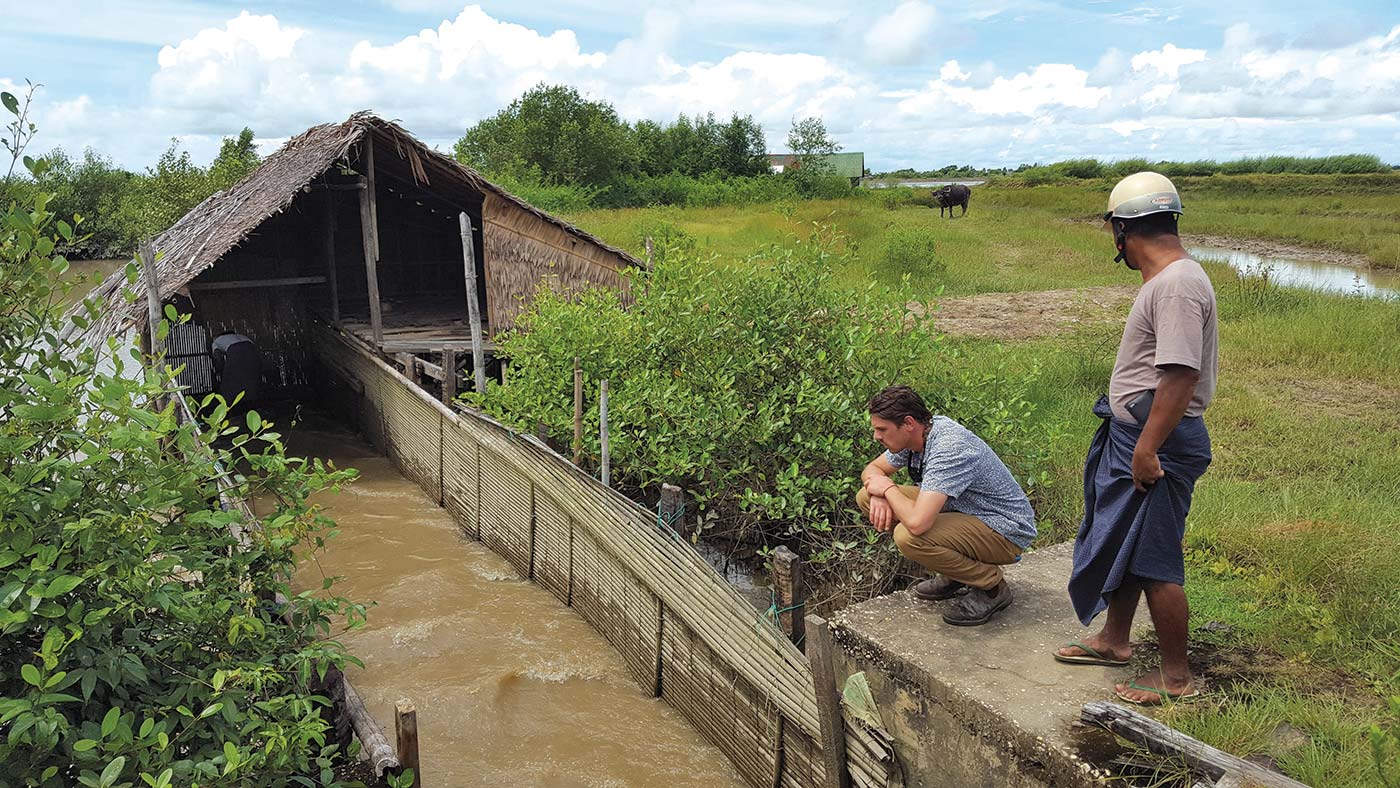
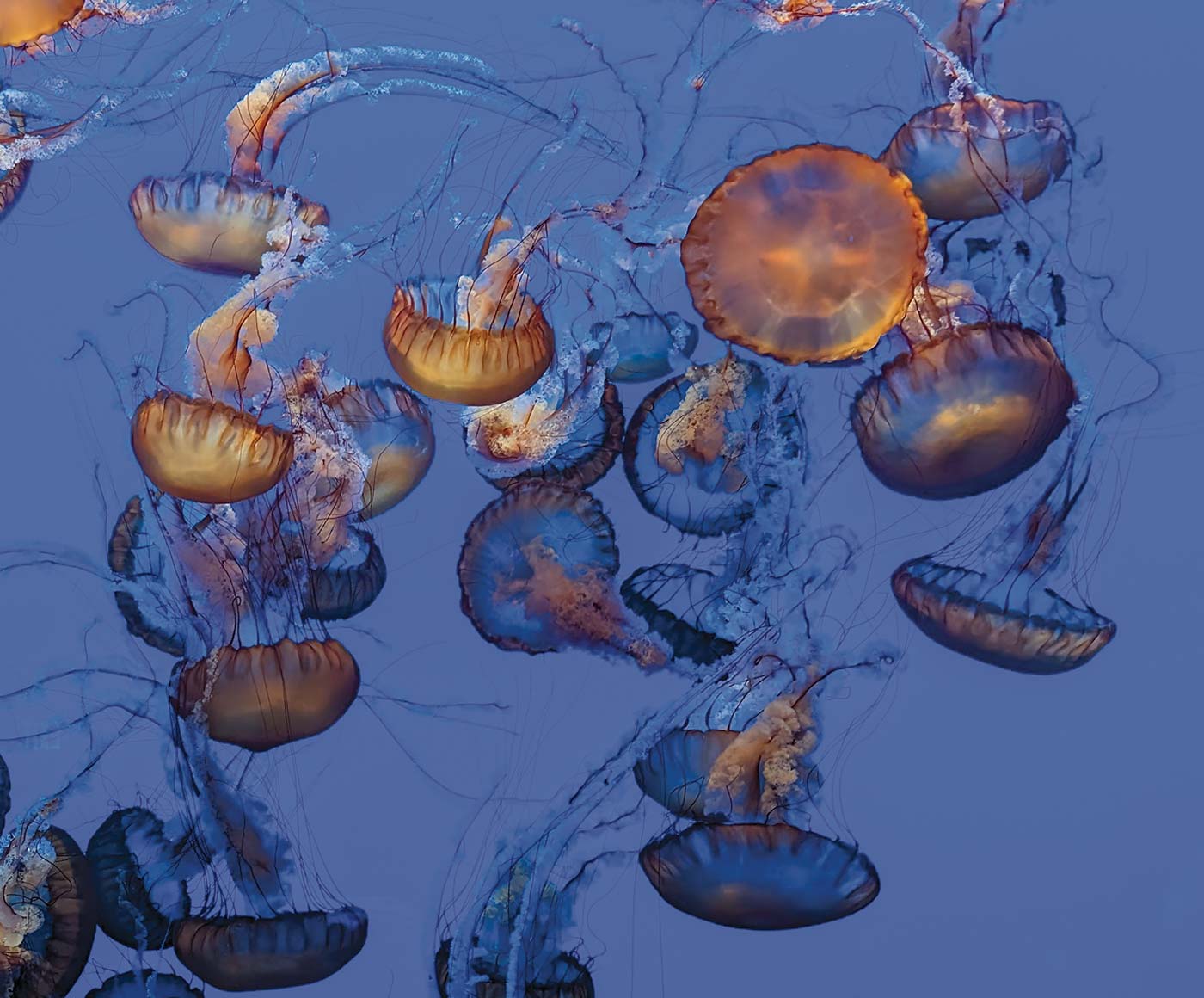
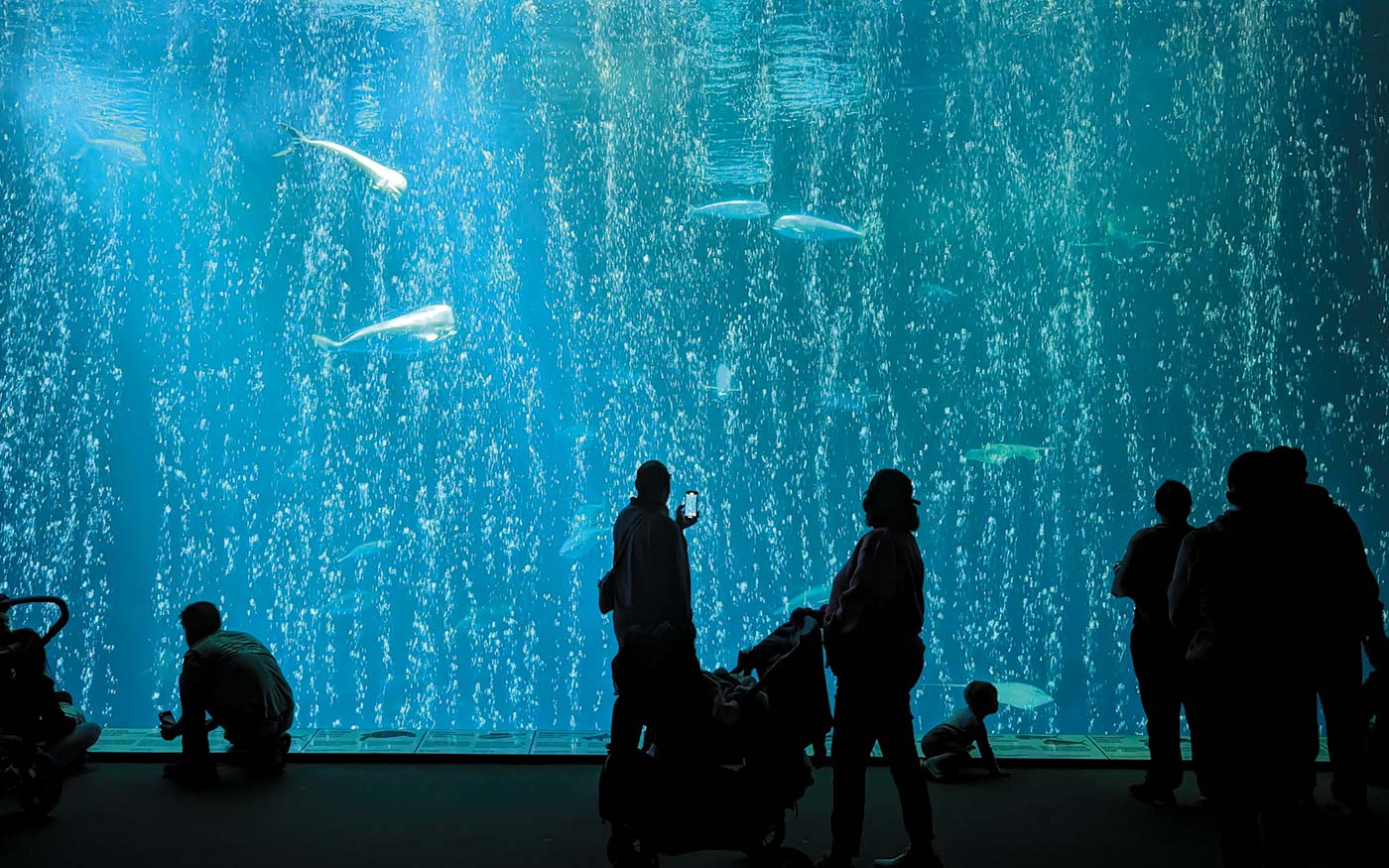
MAKING AN IMPACT
Behind-the-scenes tours at Monterey Bay Aquarium lead guests to the top of the iconic Kelp Forest Exhibit to see how its design allows the giant kelp to absorb sunlight, experience simulated tidal surges and receive fresh seawater.
The equivalent backstage pass for Seafood Watch, meanwhile, takes you to international seafood summits in Bangkok, rural shrimp farms in Krabi and coffee dates in the heart of Hanoi.
Or at least that’s where it took me in 2018.
The Aquarium sent me to report how far Seafood Watch goes to size up imported seafood, knowing that while the U.S. seafood system is closely monitored, up to 85% of seafood eaten in this country is imported, much of it red-listed.
In Bangkok, a contingent of Aquarium reps met with the Asian Seafood Improvement Collaborative, which includes fish processors, environmental NGOs and local certification bodies from Indonesia, Myanmar, Philippines, Thailand and Vietnam.
“The people in that room pull a lot of levers,” Tyler Isaac, a Seafood Watch aquaculture scientist, said at the time. “There’s a chance to make a really big impact, from both the top and from the ground level.”
After the conference, Isaac and fellow scientist Taylor Voorhees moved south, traveling upwards of 500 kilometers a day to visit and study shrimp ponds and convene hours-long meetings with locals on how to earn yellow and green ratings, by dealing with issues like disease, liquid-waste pollution and overuse of chemicals.
At one stop they talked with second generation shrimp farmer Sakulta Kirdsook. “Dad came into the business when the environment was 100%,” she said. “I came into it when it was destroyed. Only sustainability can be the solution.”
International work has intensified since, with programs for shrimp farmers in India, salmon farms in Chile and a partnership in the Philippines aimed at reducing bycatch in blue crab fishing.
“Seafood supply chains are messy, complex and opaque more often than not,” Seafood Watch’s Nash says. “Working at the level we work helps us understand problems in different fisheries and do what we can to address them.”
Their efforts remind us that Seafood Watch—and the Aquarium itself—are part of the wider mission: “to inspire conservation of the ocean.”
Seafood Watch sits on the Science and Conservation branch of the Aquarium’s organizational tree, which also addresses issues like ocean acidification, plastic pollution and Pacific Ocean ecosystems—with a focus on Southern sea otters, bluefin tuna and sharks.
“That work is not outward or public facing, and involves a lot of research and policy,” Nash says. “We’re looking at all kinds of marine questions.”
One such question isn’t a formal challenge, but remains a daunting one: “Is there hope?
“Seafood supply chains are messy, complex and opaque more often than not.”
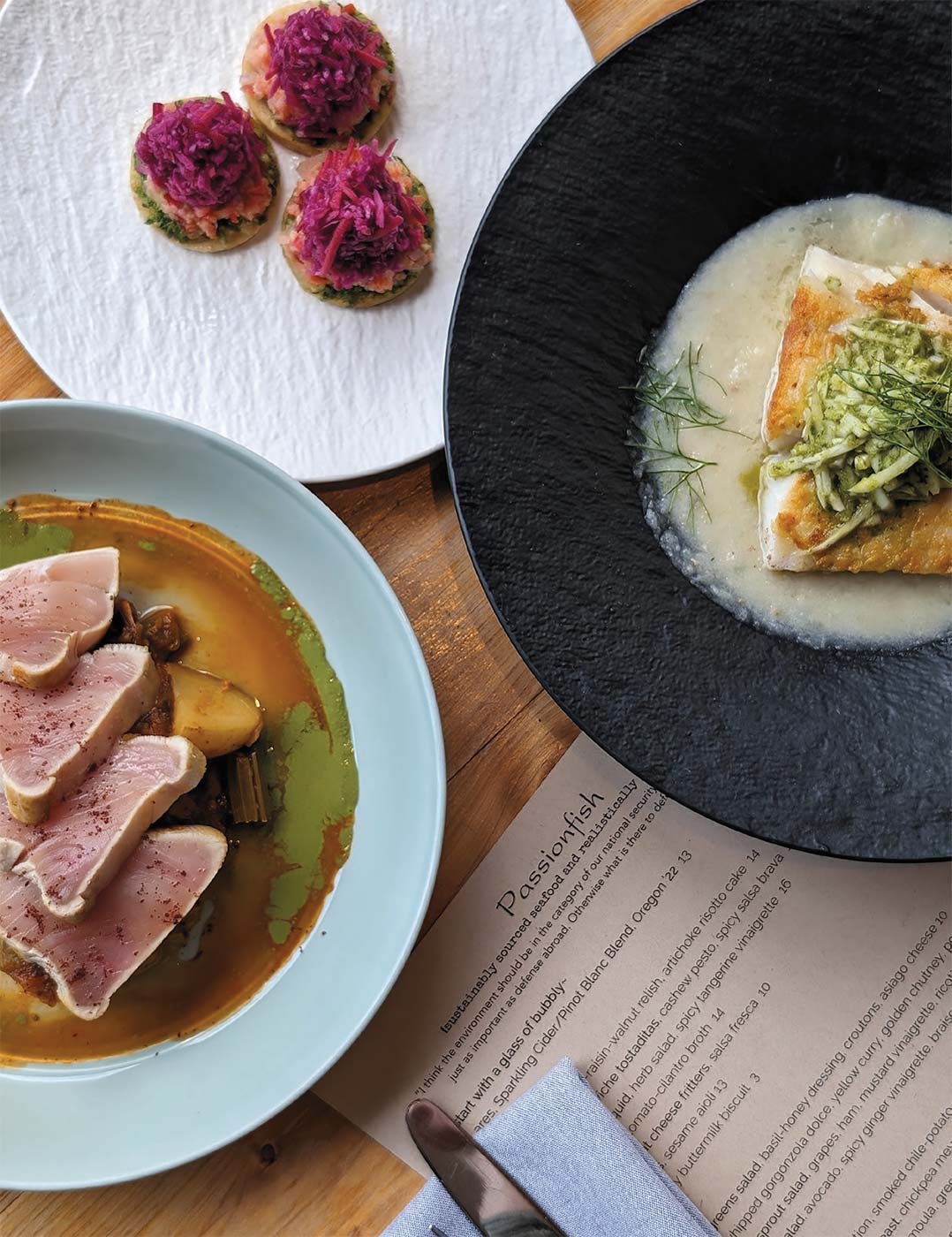
ONGOING PROBLEMS
What they’re serving up at Real Cost Cafe can kill an appetite.
“You get sick shrimp swimming in gross, poopy water, pumped with antibiotics and chemicals,” says one of the video hosts, in describing farms to avoid.
“Poop!” yelps his fellow host. “Not that appetizing, is it?”
The faux restaurant in the Ocean’s Edge wing of the Aquarium gave Seafood Watch a permanent presence in 2005. Visitors can still sit at stools and order up playful videos on why and why not to request items like bluefin tuna, eel and orange roughy. (Hint: overfishing and poorly managed fish farms.) The yuck factor relates spiritually with the whole messy endeavor that is Seafood Watch.
Looking hard at how fish are caught and what fraud that involves can get uncomfortable. And that extends beyond dust-ups with groups like the Maine lobster fishermen who claimed defamation because their trap lines catch endangered right whales. “Our evaluations don’t make everyone happy,” Nash says. “It’s part of doing the job.”
The ugliest revelation yet: Some bad actors have cultivated a legacy of seafood slavery by employing migrants sold by human traffickers on long and inescapable fishing trips across Southeast Asian seas.
The Aquarium’s response involved developing a searchable Social Risk tool, without overlaying it with the environmentally driven consumer guide. Conjuring a magic score isn’t a clean-cut equation.
“The world doesn’t work like that,” Nash says. “We concentrate on environmental impacts, and don’t ignore social impacts or carbon, but that doesn’t factor into Seafood Watch ratings. The primary focus is on environmental sustainability and trying to be the most useful possible.”
The struggle to harvest progress is real for Jannae Lizza, who has been helping run Passionfish long enough that she has a binder of printed guidelines from the earliest days of Seafood Watch’s restaurant program.
Before she flips through some of its pages— which illuminate how destructive methods like longlining, dredging and gillnetting can be—she breathes a sigh of resignation. Even at her restaurant, an early and mighty adopter of sustainability, she smacks into reality checks.
“I’m nervous, and I’m scared, that people are flabbergasted on a daily basis that we don’t serve salmon and have no idea why it can be a problem,” she says, well aware the problems with salmon earn their own Seafood Watch set of suggestions. “There’s a lot more work to be done.”
Current oceanic health isn’t the place for Lizza to go for a mood boost. A garbage truck’s worth of plastic enters the world’s oceans every 60 seconds. Marine biodiversity is plummeting. Acidification is killing corals almost as quickly as overfishing is crashing wild stocks.
But there are real reasons for optimism. As this publishes, the Blue Ribbon Task Force is emerging from its first in-person summit since COVID hit. Aquarium executive chef and task force member Matt Beaudin believes that its chefs can extend their reach in new ways, like expanded culinary school involvement and auxiliary community- based task forces focused on local specifics.
“Our influence has grown, and can grow,” he says. “People want to listen. What encourages me most is when people come up and want to engage. When they want to know, it fires us up to do something bigger than ourselves.”
Meanwhile, SW staff has just launched a Super Green Seafood list (see sidebar, p. 54) and is working on a green restaurant program. Rumors of a Cooking for Solutions reboot—and the culinary-business-supply chain-media connections it creates—are also circulating.
Seafood Watch’s ongoing tales of resilience furnish further hope. The first pocket guide listed Pacific Coast rockfish in the red; today consumer choices and fishery regulations help land it on the green and yellow lists. Bluefin tuna, once on the teetering brink of extinction—at 1.5% of its spawning Pacific bluefin population—has seen numbers improve, though it remains red listed.
Besides, it wasn’t all that long ago that suppliers in Passionfish’s network had no clue what kind of fish they were peddling, let alone where it was from.
And seafood lovers no longer have to steal—or look far—to know how to help.
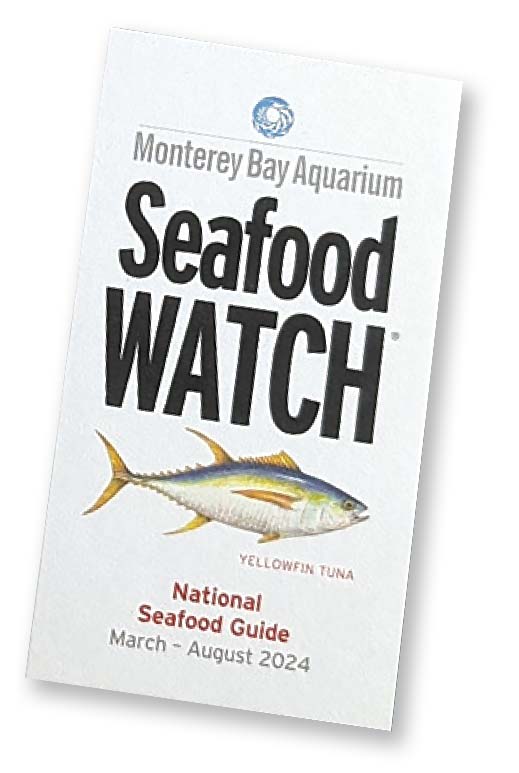
TOP-RATED RATINGS
From abalone and amberjack to wahoo and wreckfish, Seafood Watch lists more than 2,000 entries that account for species, harvest method and location. Advanced and quick search options—like “country or region,” “common fish to avoid” and even “flaky white fish”—help navigate the vast intel. There are other guides available to further advance consumer education, with slightly different approaches, including a focus on businesses and labeling for fish in the market.
Monterey Bay Aquarium Seafood Watch • The gold standard of green comes from so much nerding out on criteria like feed input and waste streams that insiders say the estimate of 160 hours spent on each species’ evaluation sounds low. Available as a cell phone-friendly website while shopping or dining out.
Marine Stewardship Council • The globally relevant MSC looks closely at fishing practices and traceability, with a searchable online database and a seafood finder app. It also tags wild fish or seafood from fisheries that have been certified to the MSC Fisheries Standard, with a blue check label.
Environmental Defense Fund Seafood Selector • EDF’s color-coded system registers mercury and omega-3 levels as a bonus for health-conscious consumers. Ocean Wise • Canada-based OW utilizes sustainability symbols next to seafood items in stores and restaurants.
FishChoice • Partnerships with the Monterey Bay Aquarium, MSC and other organizations help FishChoice focus on ways to empower businesses in particular
SUPER GREEN SEAFOOD
It’s nice when a seafood meal makes you think—how the flavors harmonize, what the ingredients evoke, where the freshness focuses. It’s also nice not to have to think about how responsibly—or irresponsibly—the fish or shellfish was raised or harvested.
Seafood Watch’s latest consumer tool proves particularly tasty on that front. As part of its year-long 25th anniversary commemoration, SW is announcing an entry from its Top 10 list of Super Green Seafood items, which it’s calling “no-brainers,” every month.
As this Edible Monterey Bay issue hits newsstands, the first three have been published, and appear here. The remaining seven debut throughout the year via the Seafood Watch website, with nutritional notes, shopping tips and clever recipes.
FARMED MUSSELS
Yes, these mussels flex superfood level benefits in terms of protein, omega-3s, thiamin, iron, zinc and a casual 850% of recommended daily vitamin B12, boosting immune system and brain health. Mussels can also benefit the ecosystems they filter naturally, reducing phosphorus and nitrogen. And, as Aquarium collaborator, dietician and burgeoning media star Patricia Bannan shows on SW’s website, they uplift an incredible Mediterranean pizza with arugula and green-listed California squid.

POLE-CAUGHT ALBACORE TUNA
Look for labeling to confirm it’s been caught by pole, troll or pole-and-line, because environmentally responsible producers like Wild Planet, Whole Foods 365, Safe Catch and American Tuna want eaters to know how it’s caught. Then bask in albacore’s boatload of essential minerals, vitamins, protein and heart-healthy fats, without bycatch guilt, perhaps by way of a salad Niçoise, spicy tuna roll, tuna melt or creamy tuna-stuffed bell peppers, the latter courtesy of a featured recipe by nutritionist Andrea Mathis, the blogger behind “Beautiful Eats & Things.”
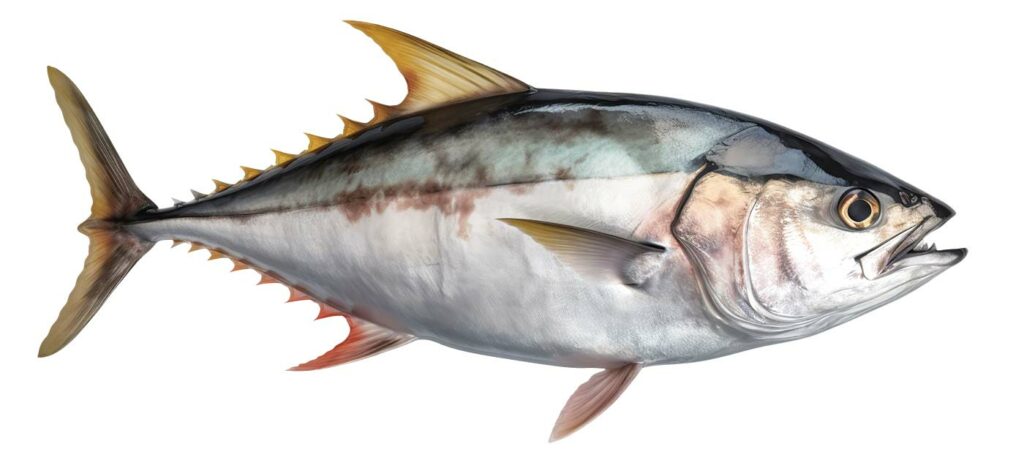
U.S. TROUT
The domestic trout industry adheres to best practices, with data published steadily, feed stocks managed wisely and chemical inputs monitored closely. The 158-page Seafood Watch report on U.S. trout shows this in detail and reflects the rigor brought to each species’ evaluation. Trout also packs omega-3 fatty acid and easily digestible protein to go with B vitamins, potassium and selenium. And it’s good eating, as the spotlighted SW recipe by dietitian, author and “fearlessly nourishing” meal advocate Cara Harbstreet—lemon caper orzo salad with smoked rainbow trout—expresses in full.
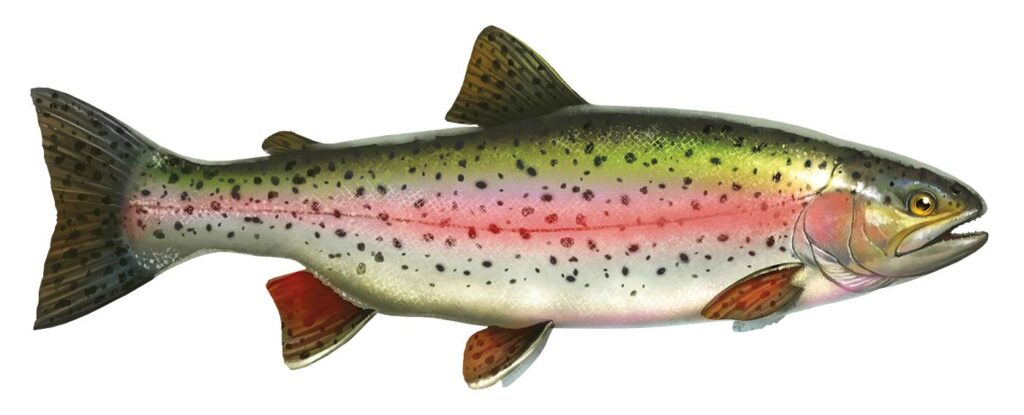
About the author
Mark C. Anderson, Edible Monterey Bay's managing editor, appears on "Friday Found Treasures" via KRML 94.7 every week, a little after 12pm noon. Reach him via mark@ediblemontereybay.com.
- Mark C. Andersonhttps://www.ediblemontereybay.com/author/markcanderson/
- Mark C. Andersonhttps://www.ediblemontereybay.com/author/markcanderson/
- Mark C. Andersonhttps://www.ediblemontereybay.com/author/markcanderson/
- Mark C. Andersonhttps://www.ediblemontereybay.com/author/markcanderson/



